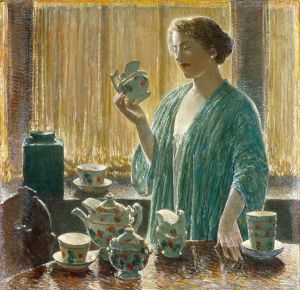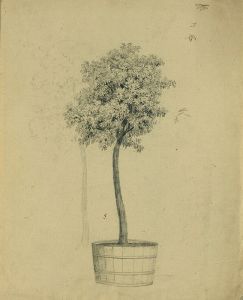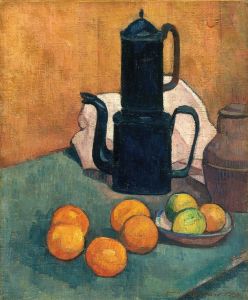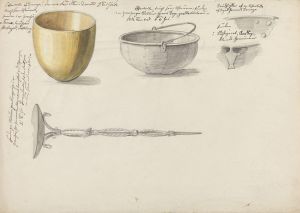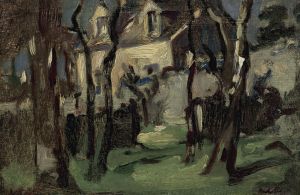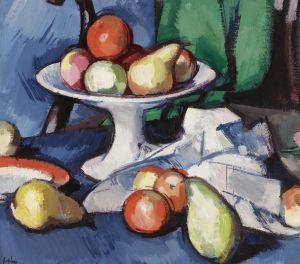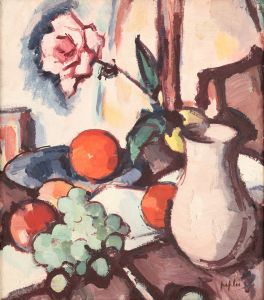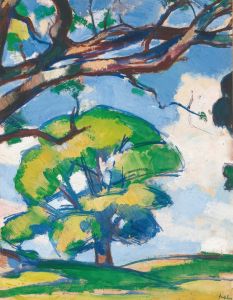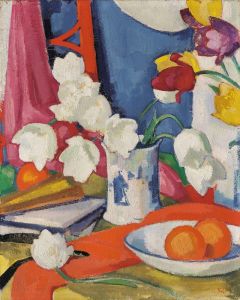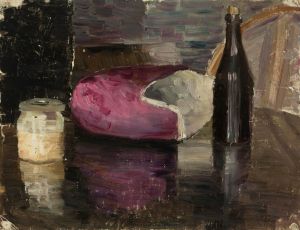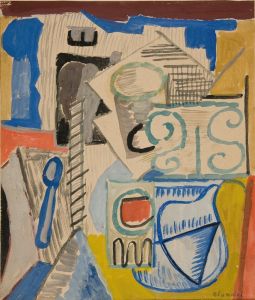
Apples and Pewter Pot
A hand-painted replica of Samuel John Peploe’s masterpiece Apples and Pewter Pot, meticulously crafted by professional artists to capture the true essence of the original. Each piece is created with museum-quality canvas and rare mineral pigments, carefully painted by experienced artists with delicate brushstrokes and rich, layered colors to perfectly recreate the texture of the original artwork. Unlike machine-printed reproductions, this hand-painted version brings the painting to life, infused with the artist’s emotions and skill in every stroke. Whether for personal collection or home decoration, it instantly elevates the artistic atmosphere of any space.
"Apples and Pewter Pot" is a still life painting by the Scottish artist Samuel John Peploe, a prominent member of the Scottish Colourists, a group of early 20th-century painters known for their bold use of color and modernist approach. Peploe, born in Edinburgh in 1871, was influenced by French Impressionism and Post-Impressionism, which is evident in his vibrant palette and dynamic compositions.
The painting "Apples and Pewter Pot" exemplifies Peploe's mature style, characterized by a harmonious arrangement of objects, a keen sense of color, and a focus on the interplay of light and shadow. In this work, Peploe depicts a simple yet elegant composition featuring apples and a pewter pot, set against a subtly textured background. The choice of objects reflects Peploe's interest in everyday items, which he elevated through his artistic vision.
Peploe's technique in "Apples and Pewter Pot" demonstrates his mastery of color and form. He employs a rich, varied palette, using bold reds and greens for the apples, which contrast with the muted tones of the pewter pot. The reflective surface of the pot is skillfully rendered, capturing the light and adding depth to the composition. Peploe's brushwork is confident and expressive, with visible strokes that contribute to the painting's dynamic quality.
The composition of "Apples and Pewter Pot" is carefully balanced, with the arrangement of the apples leading the viewer's eye through the painting. The use of light and shadow creates a sense of volume and three-dimensionality, enhancing the realism of the objects while maintaining an impressionistic touch. Peploe's attention to detail and his ability to capture the essence of his subjects are evident in this work.
Peploe's still lifes, including "Apples and Pewter Pot," are celebrated for their clarity and precision, as well as their vibrant color schemes. His work was influenced by his time in France, where he was exposed to the works of artists like Paul Cézanne and Henri Matisse. This influence is apparent in his use of color and form, which aligns with the broader trends of modern art during the early 20th century.
"Apples and Pewter Pot" is representative of Peploe's contribution to the Scottish Colourist movement, which sought to bring a modernist sensibility to Scottish art. The movement was characterized by its emphasis on color, light, and form, drawing inspiration from both French and Scottish artistic traditions. Peploe, along with fellow Colourists such as F.C.B. Cadell, George Leslie Hunter, and J.D. Fergusson, played a crucial role in advancing this movement and establishing its place in the history of art.
Today, Peploe's works, including "Apples and Pewter Pot," are held in high regard and can be found in major art collections and museums. His paintings continue to be studied and appreciated for their innovative approach to color and composition, as well as their ability to capture the beauty of everyday objects. Peploe's legacy as a leading figure in the Scottish Colourist movement endures, and his work remains influential in the world of modern art.





